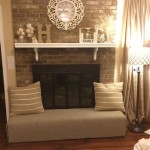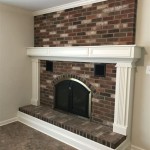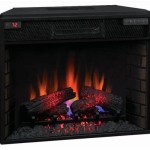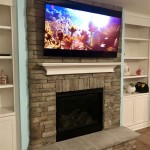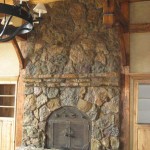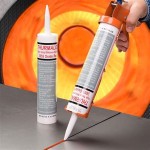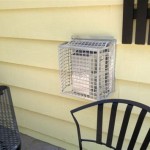Fireplace Hearth Pad Ideas: A Comprehensive Guide
The hearth pad, a non-combustible surface extending in front of and around a fireplace, is a critical component for safe and compliant operation. It serves as a protective barrier between the heat source and the surrounding flooring, preventing the ignition of combustible materials like wood, carpet, or rugs from sparks, embers, or direct heat radiation. Selecting the right hearth pad involves careful consideration of fireplace type, building codes, aesthetic preferences, and budgetary constraints.
This article provides a comprehensive overview of various fireplace hearth pad ideas, covering materials, styles, and considerations for ensuring both safety and visual appeal. Understanding the different options available allows for informed decisions that will create a functional and aesthetically pleasing fireplace area.
Understanding Hearth Pad Requirements
Before delving into specific hearth pad ideas, it is essential to understand the underlying requirements that dictate the size and composition of the hearth. These requirements are primarily dictated by local building codes and the specific type of fireplace being installed. Ignoring these regulations can lead to safety hazards, failed inspections, and potential legal liabilities.
The size of the hearth pad is directly related to the fireplace opening. For wood-burning fireplaces, building codes typically specify minimum dimensions for the front and side extensions of the hearth. These dimensions are designed to protect the surrounding floor from stray sparks and embers that may escape the firebox. Gas fireplaces generally have less stringent requirements due to their more controlled combustion process. However, minimum clearances are still necessary to prevent overheating of adjacent surfaces.
The non-combustible nature of the hearth pad is paramount. Materials such as concrete, stone, tile, brick, and metal are commonly used. The specific thickness and composition of these materials must meet or exceed the standards outlined in the relevant building codes. A qualified building inspector or fireplace professional can provide guidance on meeting these requirements. While manufactured hearth pads are available and designed to meet required safety standards, building a custom hearth pad will require additional effort to ensure all safety requirements and local building codes are being met.
Exploring Hearth Pad Materials
The material selection for a hearth pad significantly impacts its durability, aesthetic appeal, and cost. Each material offers a unique set of advantages and disadvantages that must be carefully weighed against specific needs and preferences.
Stone: Stone hearth pads offer a timeless and elegant look. Options range from natural stone slabs like granite, marble, and slate to manufactured stone veneers. Natural stone provides inherent durability and unique variations in color and texture. However, it can be more expensive and may require professional installation. Manufactured stone veneers offer a more affordable alternative while still providing a realistic stone appearance. Different finishes can be applied to achieve textures from smooth to rustic. Maintenance should be considered as well, such as sealing certain stones to protect against staining.
Tile: Tile is a versatile and cost-effective hearth pad material. Ceramic, porcelain, and natural stone tiles offer a wide array of colors, patterns, and sizes. Tile is durable, easy to clean, and can be installed in various configurations to create unique designs. Porcelain tiles are particularly well-suited for hearth pads due to their high heat resistance and low porosity. Grout lines, however, require regular cleaning and maintenance to prevent staining and cracking. Special considerations should be noted when choosing tile, such as ensuring it is rated for high temperature use in the areas near the firebox.
Brick: Brick hearth pads evoke a classic and rustic charm. They are durable, heat-resistant, and relatively affordable. Brick can be laid in various patterns, such as herringbone or running bond, to create visual interest. The natural variations in brick color and texture add to its character. However, brick can be porous and may require sealing to prevent moisture absorption. Similar to tile grout, mortar joints will need to be maintained and cleaned to keep the hearth looking good.
Concrete: Concrete hearth pads offer a modern and industrial aesthetic. They can be poured in place or pre-cast into various shapes and sizes. Concrete can be stained, polished, or textured to achieve a desired look. It is durable, heat-resistant, and relatively low-maintenance. However, concrete can be prone to cracking and may require reinforcement to prevent structural damage. Special sealers should be applied to protect from staining.
Metal: Metal hearth pads are generally used with freestanding stoves rather than built-in fireplaces. They provide a clean and contemporary look. Steel, aluminum, and even decorative copper can be used. Metal hearth pads are typically thin and lightweight, making them easy to install. However, they can be susceptible to scratching and denting. The metal used must be non-combustible and of sufficient thickness to provide adequate protection.
Design Considerations for Hearth Pads
Beyond the material selection, several design considerations contribute to the overall aesthetic and functionality of a hearth pad. These include shape, size, style, and integration with the surrounding décor.
Shape and Size: The shape of the hearth pad should complement the fireplace design and the overall room layout. Common shapes include rectangular, square, curved, and angled. The size of the hearth pad should be proportionate to the fireplace and the surrounding space. A hearth pad that is too small may not provide adequate protection, while one that is too large can overwhelm the room. Considerations should be made for how the shape will fit into the room. For example, an angled hearth pad in an open concept space could define the fireplace space while still allow traffic to flow by. A curved hearth pad may soften angular rooms.
Style: The style of the hearth pad should align with the overall design aesthetic of the room. A traditional fireplace may benefit from a brick or stone hearth pad with a classic pattern. A modern fireplace may pair well with a concrete or metal hearth pad with clean lines and a minimalist design. Consider the existing design materials and elements in the room and select a hearth pad material and style that blends with them. While contrasting the fireplace with the room may make the fireplace a focal point, it may disrupt continuity to the point where it is unappealing.
Integration with Décor: The hearth pad should be integrated seamlessly into the surrounding décor. This can be achieved by selecting materials and colors that complement the existing flooring, walls, and furniture. Adding decorative elements, such as a mantel, fireplace screen, or accessories, can further enhance the overall aesthetic. For example, a dark slate hearth pad may look better with a dark colored fireplace screen. For a brighter, modern look, stainless steel fireplace screens and accessories may complement the slate hearth pad better.
Raised Hearth Pads: A raised hearth pad elevates the fireplace, creating a more dramatic focal point and providing a comfortable seating area. Raised hearth pads can be constructed from various materials, including concrete, stone, or wood framing with a non-combustible surface. However, it is important to ensure that the raised hearth pad is structurally sound and meets all safety requirements. Special attention should be paid to building codes related to the height and depth of a raised hearth pad.
Flush Hearth Pads: A flush hearth pad sits level with the surrounding flooring, creating a seamless and integrated look. Flush hearth pads are typically constructed from tile or stone and are ideal for modern or minimalist designs. However, it is important to ensure that the transition between the hearth pad and the surrounding flooring is smooth and even to prevent tripping hazards.
Adding Texture: Texture can add visual interest and dimension to a hearth pad. This can be achieved by using materials with inherent texture, such as natural stone or brick, or by adding texture during the installation process. For example, a concrete hearth pad can be textured with a broom finish or stamped with a decorative pattern.
Installation Considerations
Proper installation is essential for ensuring the safety and longevity of a hearth pad. While some homeowners may be comfortable with DIY installation, it is generally recommended to hire a qualified professional, especially for complex projects or when dealing with gas or wood-burning fireplaces.
Substrate Preparation: The substrate, or the surface beneath the hearth pad, must be structurally sound, level, and clean. Any existing flooring or debris must be removed to ensure proper adhesion of the hearth pad material. A concrete slab is generally the ideal substrate for a hearth pad. If the substrate is uneven, a self-leveling compound can be used to create a smooth surface.
Adhesive Selection: The appropriate adhesive must be selected based on the hearth pad material and the substrate. Thin-set mortar is commonly used for tile and stone hearth pads, while construction adhesive is used for metal hearth pads. It is important to follow the manufacturer's instructions carefully when applying the adhesive.
Grouting and Sealing: Tile and stone hearth pads require grouting to fill the spaces between the individual pieces. The grout should be selected to complement the hearth pad material and should be applied evenly. After the grout has cured, it should be sealed to prevent staining and moisture absorption. Stone hearth pads may also require sealing to protect them from stains and damage.
Clearances and Safety: Adhering to safety clearances is vital. Ensure the hearth pad extends the required distance in front of and to the sides of the fireplace opening. Maintain proper clearances between the fireplace and any combustible materials, such as walls, furniture, or curtains. Failure to maintain these clearances can create a fire hazard.
Professional Installation: Hiring a qualified professional ensures that the hearth pad is installed correctly and meets all applicable building codes. Professionals have the experience and expertise to handle complex installations and can provide valuable advice on material selection and design considerations. Furthermore, licensed contractors often provide warranties on their work, offering added peace of mind.
Selecting the right hearth pad is a crucial step in creating a safe and aesthetically pleasing fireplace area. By carefully considering material options, design considerations, and installation requirements, homeowners can create a hearth pad that will enhance the beauty and functionality of their fireplace for years to come.

Diy Hearth Pad Farmhouse On Boone

Diy Hearth Pad Farmhouse On Boone

Need To Make A Hearth Pad For Wood Stove Great Lakes 4x4 The Largest Offroad Forum In Midwest Pads

Diy Hearth Pad Farmhouse On Boone

Platform Wood Stove Hearth Ideas Ealemieux Surround

Hearth Pads For Wood Burning Stoves We Love Fire

How To Decorate Around A Wood Stove Rustic Crafts Diy

Diy Hearth Pad Farmhouse On Boone

Drastic Hearth Makeover Diy Wood Stove Pad

Floor Support For Hearth Pad Wood Stove Corner Burning
Related Posts

